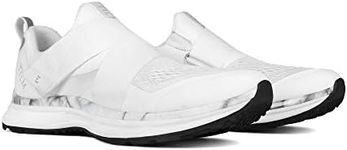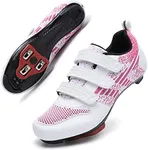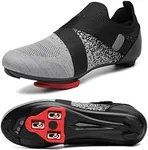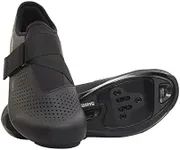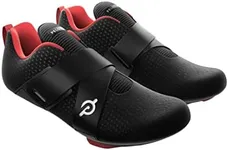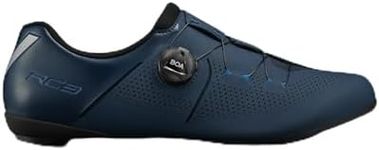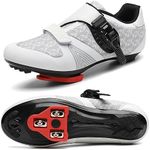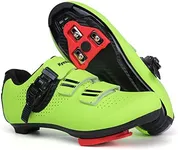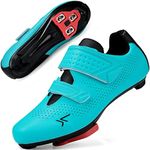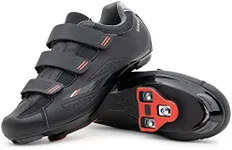Buying Guide for the Best Indoor Cycling Shoes
Choosing the right indoor cycling shoes can significantly enhance your cycling experience, providing better comfort, efficiency, and performance. The right pair of shoes will ensure that your feet are well-supported, and that you can transfer power effectively from your legs to the pedals. Here are some key specifications to consider when selecting indoor cycling shoes, along with explanations to help you make an informed decision.Fit and ComfortFit and comfort are crucial because you will be wearing these shoes for extended periods. A well-fitting shoe should be snug but not too tight, allowing for some wiggle room for your toes. Shoes that are too tight can cause discomfort and even injury, while shoes that are too loose can lead to inefficient pedaling and blisters. To find the right fit, consider trying on shoes at the end of the day when your feet are slightly swollen, and wear the same type of socks you plan to use during cycling.
Closure SystemThe closure system of a cycling shoe affects how securely it fits and how easy it is to adjust. Common closure systems include Velcro straps, ratchet buckles, and BOA dials. Velcro straps are simple and easy to adjust, making them a good choice for beginners. Ratchet buckles offer a more secure fit and are often found on mid-range shoes. BOA dials provide precise adjustments and are typically found on high-end shoes. Choose a closure system that offers the right balance of convenience and security for your needs.
Sole StiffnessSole stiffness is important because it affects how efficiently power is transferred from your legs to the pedals. Stiffer soles provide better power transfer, making your pedaling more efficient. However, very stiff soles can be less comfortable for walking. For indoor cycling, a moderately stiff sole is usually sufficient, providing a good balance between power transfer and comfort. If you are a competitive cyclist, you might prefer a stiffer sole for maximum efficiency.
BreathabilityBreathability refers to how well the shoe allows air to circulate, keeping your feet cool and dry. This is particularly important during intense indoor cycling sessions where your feet can get quite hot and sweaty. Look for shoes with mesh panels or other breathable materials. If you tend to sweat a lot, prioritize breathability to ensure comfort and prevent overheating.
Cleat CompatibilityCleat compatibility determines which type of pedal system the shoes can be used with. The most common systems are SPD (two-bolt) and SPD-SL (three-bolt). SPD cleats are often used for indoor cycling and offer easier walking, while SPD-SL cleats provide a larger contact area for better power transfer. Check the type of pedals on your indoor bike and choose shoes that are compatible with those cleats. If you are unsure, SPD-compatible shoes are a versatile choice that works with most indoor cycling setups.
WeightThe weight of the shoe can affect your overall cycling performance and comfort. Lighter shoes can make your pedaling feel easier and more efficient, especially during long sessions. However, lighter shoes may also be less durable. Consider how important weight is to you based on your cycling goals. If you are focused on performance, a lighter shoe might be beneficial. For general fitness and comfort, a slightly heavier but more durable shoe could be a better choice.
